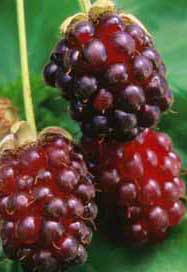 There are three main categories of cheese in which the presence of mold is a significant feature: soft ripened cheeses, washed rind cheeses and blue cheeses.
There are three main categories of cheese in which the presence of mold is a significant feature: soft ripened cheeses, washed rind cheeses and blue cheeses.
Soft-ripened cheeses begin firm and rather chalky in texture, but are aged from the exterior inwards by exposing them to mold. The mold may be a velvety bloom of Penicillium candida or P. camemberti that forms a flexible white crust and contributes to the smooth, runny, or gooey textures and more intense flavors of these aged cheeses. Brie and Camembert, the most famous of these cheeses, are made by allowing white mold to grow on the outside of a soft cheese for a few days or weeks. Goats’ milk cheeses are often treated in a similar manner, sometimes with white molds (Chèvre-Boîte) and sometimes with blue.


 What is a Boysenberry?
What is a Boysenberry?




























